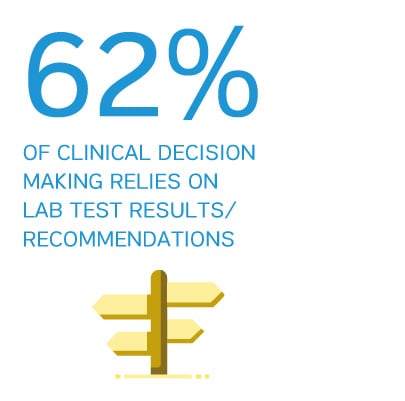Khosrow Shotorbani
CEO and founder of the lab 2.0 Strategic Services
Healthcare systems globally are undergoing a paradigm shift from ‘sick care’ to ‘well care’. With budgets becoming ever more stretched, cost avoidance through disease prevention and early intervention are the only viable option – we can no longer afford to simply care for the sick. Disease prevention is the holy grail of laboratory medicine – analyzing patient data to identify those at high risk of a specific condition or disease, then facilitating early interventions to prevent it. The problem for the pathology sector is: how do you get paid for stopping somebody getting ill?
‘Lab 2.0’ is designed to answer this question. Unlike the traditional ‘Lab 1.0’ – which will always be essential for acute care – Lab 2.0 is focused on post-diagnostic computation to provide new solutions to improve pre-care, chronic care and population health. Laboratory medicine can play an integral role in value-based healthcare, by combining longitudinal patient results with population data and the latest medical understanding to ‘connect the clinical dots’. By remodeling this information into real-time diagnostic insights, Lab 2.0 can guide clinical decision-making and ensure more targeted interventions over the course of a disease or condition, from screening and diagnosis to monitoring, surveillance and prediction.
To achieve Lab 2.0, we need to move beyond the ‘order in, results out’ approach, developing new business and economics models, and aligning incentives across the entire care continuum. Pathology services interact with virtually every other aspect of the healthcare system, and closer collaboration will allow detection of the onset of a condition or potential comorbidity at the earliest opportunity. Combining this with improved communication and patient education should help to improve adherence with disease management and proactively engage patients (consumers) in maintaining their own health. If we can do this, we have a promising future, and the lab will remain the biggest bargain in managing health!
Lab 2.0 – a potential roadmap
For too long, laboratories have been concentrating on improving the analytical workflow, while ignoring the pre- and post-analytical areas of diagnostics. We need to diversify the way pathology laboratory services are funded, moving away from a simple ‘cost per test’ model. This won’t happen overnight, but there are steps that can be taken now to start down this road.
Enhanced data analytics is central to increasing the value of diagnostics, helping us move from looking at what has happened to what is going to happen. Some of the tools we need to achieve this already exist, collating data from various sources, recognizing patterns and predicting likely outcomes. These technologies are laying the foundations of ‘cost per diagnosis’ services, identifying trends and enabling effective population surveillance.
The next step is to proactively identify changes to patient conditions based on longitudinal testing data. This will put the laboratory at the heart of the clinical decision-making process, enabling a more targeted, personalized approach to diagnosis and intervention. The potential downstream savings associated with faster, more accurate diagnoses and earlier, better treatment decisions are enormous, and pathology services need to demonstrate how greater upfront investment in laboratory services and data analytics can be used to reduce the overall ‘cost per outcome’.
Finally, fully integrated electronic records and the development of powerful analytical tools will allow the development of a predictive pathology service which aims to promote wellness, rather than simply treat illness. This holistic approach will enable laboratory services to take more responsibility for the costs of population health, driving the development of a healthcare system that is centered on the total ‘cost per life’.



